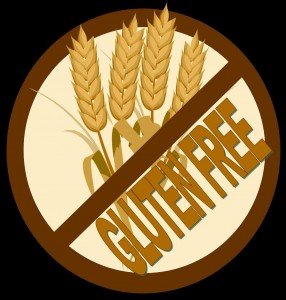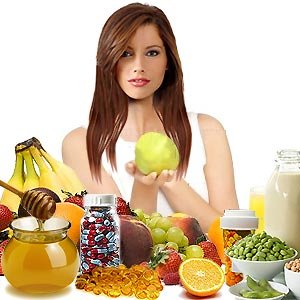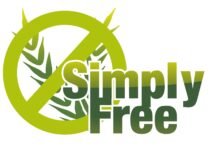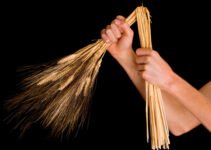What is a gluten free diet?
Is a diet that excludes foods containing gluten. Gluten is a protein found in wheat, including kamut and spelt, barley, rye, malts and triticale.
A gluten-free diet is used to treat celiac disease.
Gluten causes inflammation in the small intestines of people with celiac disease.
Eating a gluten-free diet helps people with celiac disease control their signs and symptoms and prevent complications.
Gluten can be sneaky. Food ingredients such as modified food starches, various seasonings and hydrolyzed vegetable proteins (cereals or legumes that are broken down by acids or enzymes and used to enhance flavour) may contain gluten, but you may not know it from the ingredients listed on the package.
The range of foods to be wary of is vast. They include hot dogs, frozen burgers (meat, chicken and fish), seasoned or dry roasted nuts, cheese spreads, soups, Worcestershire sauce, mustard, pickles, baking powder, canned cake frosting, chocolate bars and regular beer, ale and lager.
Foods to avoid:
– Barley; Bulgur; Durham
– Farina; Graham flour; Kamut
– Matzo meal; Rye; Semolina
– Spelt (a form of wheat); Triticale; Wheat
Avoid these foods unless they’re labelled as gluten free or made with corn, rice, soy or other gluten-free grain.
Also check the label to see that they’re processed in a facility that is free of wheat or other contaminating products:
Beers
Breads
Candies
Cakes and pies
Cereals
Cookies
Crackers
Croutons
Gravies
Imitation meats or seafood
Oats
Pastas
Processed luncheon meats
Salad dressings
Sauces (including soy sauce)
Self-basting poultry
Soups
Certain grains, such as oats, can be contaminated with wheat during growing and processing stages of production.
It’s not clear whether oats are harmful for most people with celiac disease, but doctors generally recommend avoiding oats unless they are specifically labelled gluten free.
The question of whether people eating a gluten-free diet can consume pure oat products remains a subject of scientific debate.
Many other products that you eat or that could come in contact with your mouth may contain gluten. These include:
– Food additives, such as malt flavouring, modified food starch and others
– Lipstick and lip balms
– Medications and vitamins that use gluten as a binding agent
– Play dough
– Toothpaste
Cross-contamination also may occur anywhere ingredients come together, such as on a cutting board or a grill surface. You may be exposed to gluten by using the same utensils as others, such as a bread knife, or by sharing the same condiment containers — the condiment bottle may touch the bun, or a knife with bread crumbs may contaminate a margarine stick or mayonnaise jar.
How Does Gluten-Free Diet
Although gluten is not a problem for most people, however, some people can not tolerate gluten. Nobody knows how or why, but it is believed that the immune systems of certain persons react against gluten. By giving full gluten, these individuals will not only feel better in everyday life, but will avoid the appearance of other health problems in the future.
After eating foods containing gluten, people with this intolerance will suffer symptoms such as bloating, nausea, headache and constipation. Extreme cases can lead to infertility, osteoporosis and intestinal cancer. Therefore, a gluten-free diet is essential.
Celiac disease (also called celiac disease, gluten intolerance or gluten enteropathy) is a chronic digestive disease caused by ingestion of gluten, which prevents absorption of nutrients, vitamins and minerals by the intestine. Celiac disease is permanent, so sufferers should definitely give the gluten in their diet. Once you give up gluten, many people with celiac disease will feel better in a few weeks, but in some cases can take up to two years restoring bowel.
Disadvantages Gluten-Free Diet
Gluten is found in a surprising number of foods so that it can be difficult to remove completely from the diet. But if you have celiac disease, is really the best way to become and remain healthy.
What Can You Do in the Diet
You have to give up most processed foods, including bread, cakes, pasta and some meat products like sausages. If in doubt, check the label before buying the product. List of ingredients may include wheat, barley or rye – all contain gluten.
The good news is that in recent years have created hundreds of gluten-free foods. So now you can buy gluten-free bread and pasta, along with many other products.
Most large supermarkets have in stock a wide range of gluten-free products and some foods are even available on prescription. Instead of regular flour, you can use other types of flour do not contain gluten, among them potato flour, soy flour and buckwheat flour.
Many foods do not contain gluten, by their nature, including rice, corn, fish, cheese and eggs. Fruits, vegetables and legumes such as peas and beans are good. Gluten-free food alternatives are now widely available to replace regular food, containing gluten.
A Day in the Gluten-Free Diet
Breakfast: porridge without gluten, dried fruit.
Lunch: Tuna salad with beans, cheese or mixed in tomato sauce, rice crackers, fruit.
Dinner: Steak, potatoes, carrots and peas.
Remember that, when you start a diet, consult your doctor.



